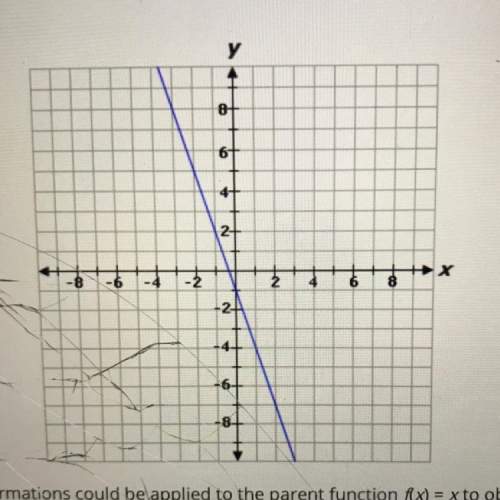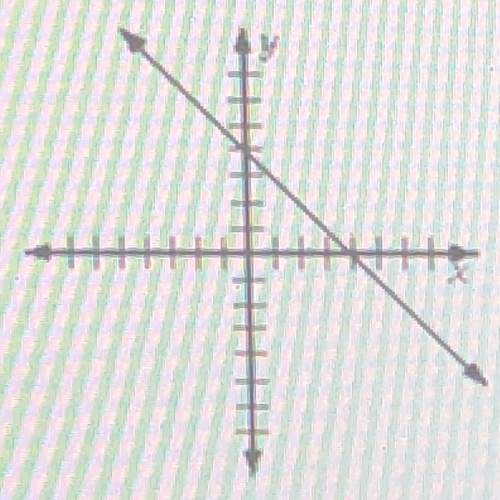Consider the graph of function g below.
determine which sequences of transformations cou...

Mathematics, 10.12.2019 18:31 malaysiae6321
Consider the graph of function g below.
determine which sequences of transformations could be applied to the parent function f(x) = x to obtain the graph of g.
shift right 1 unit, reflect over the x-axis, and then vertically stretch by a factor of 3.
reflect over the y-axis, vertically stretch by a factor of 3, and then shift down 1 unit.
shift right 1 unit, reflect over the y-axis, and then vertically stretch by a factor of 3.
shift down 1 unit, reflect over the x-axis, and then vertically stretch by a factor of 3.
shift left 2 units, reflect over the x-axis, and then vertically stretch by a factor of 3.
reflect over the x-axis, vertically stretch by a factor of 3 and then shift down 1 unit.
it’s more than 1 answer


Answers: 3


Another question on Mathematics

Mathematics, 21.06.2019 14:30
Find the value of 1715⋅211.though these numbers aren't quite as nice as the ones from the example or the previous part, the procedure is the same, so this is really no more difficult. give the numerator followed by the denominator, separated by a comma.
Answers: 1

Mathematics, 21.06.2019 19:00
Billy plotted −3 4 and −1 4 on a number line to determine that −3 4 is smaller than −1 4 is he correct? explain why or why not?
Answers: 3

Mathematics, 21.06.2019 19:00
Which of the expressions (on the photo document i inserted) together represent all solutions to the following equation? 8cos(12x)+4=-4 *the answer should be in degrees.* > i would like for someone to explain the process to find the solutions for this.
Answers: 2

Mathematics, 21.06.2019 21:40
Which statement is true about a number and its additive inverse? a. their product is always one. b. their sum is always one. c. they are always reciprocals of each other. d. their sum is always zero.
Answers: 1
You know the right answer?
Questions

Mathematics, 04.01.2020 01:31

Biology, 04.01.2020 01:31



Chemistry, 04.01.2020 01:31


Mathematics, 04.01.2020 01:31

History, 04.01.2020 01:31



History, 04.01.2020 01:31

English, 04.01.2020 01:31

Mathematics, 04.01.2020 01:31

Mathematics, 04.01.2020 01:31




Mathematics, 04.01.2020 01:31


Mathematics, 04.01.2020 01:31




